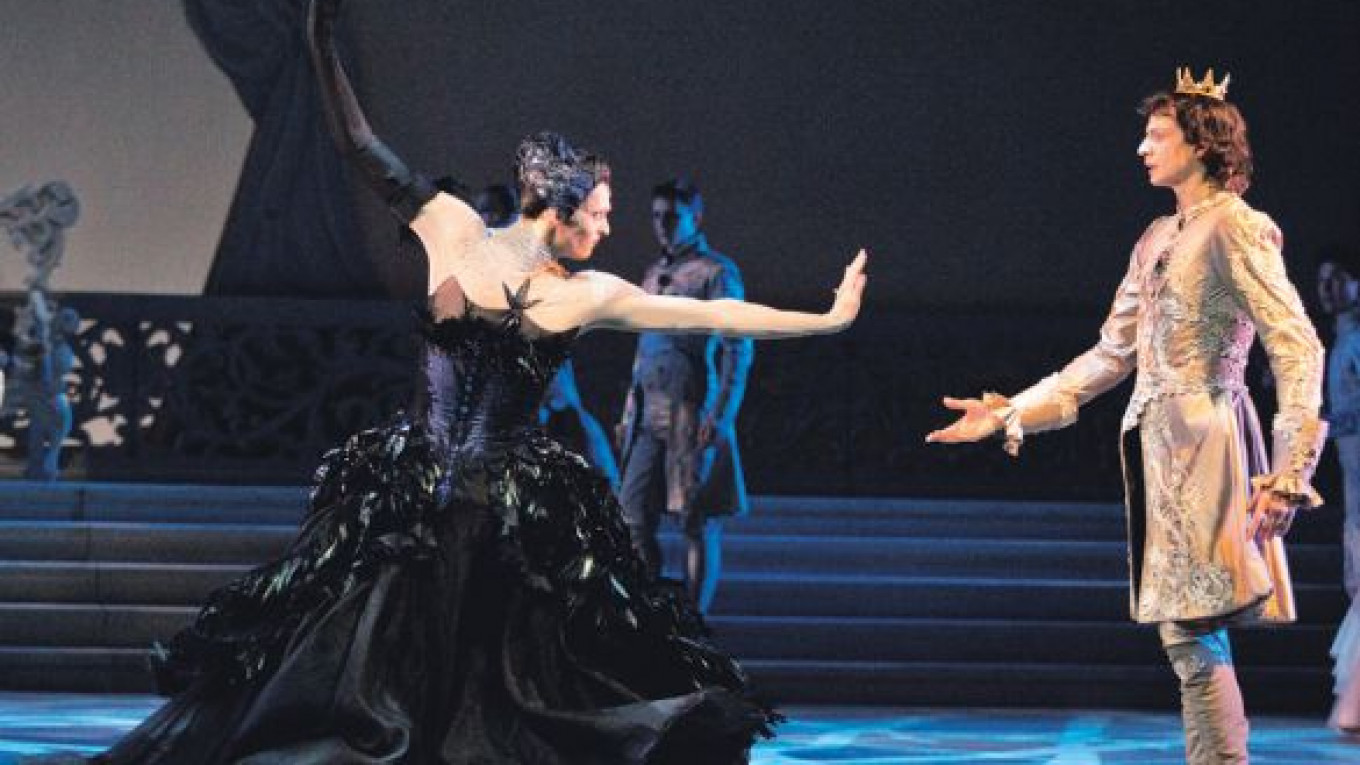The summer before last came the surprising announcement that Spanish choreographer Nacho Duato, a major driving force in contemporary ballet, had agreed to take on the duties of ballet artistic director at St. Petersburg's Mikhailovsky Theater, thereby becoming the first foreigner to hold such a post in Russia since the retirement a century ago of the Mariinsky Theater's legendary French-born Marius Petipa.
Over the past year, Duato has enjoyed great success in staging four of his own ballets for the Mikhailovsky. Along the way, he was also commissioned to undertake a production of Pyotr Tchaikovsky's "Sleeping Beauty." For this, his first foray into classical ballet, there were no doubt many who expected him to come up with something absolutely brand new, "a 'Sleeping Beauty' for the 21st century," with choreography akin to that which he so successfully applied to works of his own devising. And, indeed, Duato originally announced that his production would contain "not a single step by Petipa."
The result, however, which had its premiere in mid-December, turned out quite differently. Instead of rejecting Petipa, Duato essentially followed him, with many twists and turns, from beginning to end.
Huge and sometimes puzzling cuts were made in the ballet's nearly three hours of music, reducing the performance time, intermissions included, to just two hours and 40 minutes. Some parts of Petipa's choreography were so distorted as to be out of sync with the music. And sequences were liberally lifted, without credit in the program, from the work of other choreographers who, over the course of the past 121 years, have made their own adaptations to the original.
Yet there were also moments here and there when Duato added very apt movement from his own reserve of choreographic invention. And the "real" Duato, as seen in his two brilliant stagings for the Stanislavsky and Nemirovich-Danchenko Musical Theater and in visits to Moscow the past two summers by his former Spanish company, was given full rein in his imaginative reinvention of the evil fairy Carabosse as a transvestite, dressed in a full-length black evening gown and accompanied by an army of dancing cockroaches.
Very much on the plus side of the production was the work of Serbian designer Angelica Atlagic, who created beautifully understated decor, with scenes of sky, forest and lake as background, and a splendid array of period costumes, also understated, and largely in hues of pastille.
Despite my reservations about its choreographic setting, the Mikhailovsky's "Sleeping Beauty" does add up to a pretty good show, one likely to give much pleasure to the relatively undemanding viewers who probably form the majority among most ballet audiences. Muscovites may possibly have a chance to pass judgment on it when the Mikhailovsky comes to town in April under the auspices of the Golden Mask Festival.
I caught up with "Sleeping Beauty" two weeks after its mid-December premiere. The special attraction on the evening I saw it was the debut as Princess Aurora and Prince Désiré of Natalya Osipova and Ivan Vasilyev, the pair of young superstars who abruptly departed the Bolshoi Theater in November to join the Mikhailovsky.
For most of the performance, the dancing of Osipova and Vasilyev seldom rose above the level of ordinary. Only in the final act's pas de deux did they manage to set off fireworks of the kind that have so often thrilled Bolshoi audiences.
The problem by no means lay entirely with Duato's staging. Osipova, at the Bolshoi, produced a fair share of magic dancing the lead roles in such classics as "Giselle," "La Sylphide" and "Coppelia." But any ballerina, no matter how talented, is almost certain to come up against a classical role that is simply not for her. In Osipova's case, Aurora looks to be one of those. The reason is not easy to pin down. I can do no more for now than chalk it up to a lack of the certain kind of "presence" on stage that the part requires.
Vasilyev has neither the physique nor temperament of the princely type of dancer, the danseur nobile, needed to portray Désiré. Much of the time he simply looked out of place. He also seemed inhibited by the relatively small dimensions of the Mikhailovsky's stage.
Duato may perhaps someday return to Russian classical ballet and add something significant to its great traditions. For now, however, I am happy to know that he is back at work staging still more of his own ballets for the Mikhailovsky. As for Osipova and Vasilyev, I sincerely wish them success in finding a repertoire at their new home that is more a match for their remarkable talents.
Sleeping Beauty is on Feb. 7, 11 and 12. Mikhailovsky Theater. 1 Ploshchad Izkusstva. St. Petersburg. Tel. (812) 595-4305.
A Message from The Moscow Times:
Dear readers,
We are facing unprecedented challenges. Russia's Prosecutor General's Office has designated The Moscow Times as an "undesirable" organization, criminalizing our work and putting our staff at risk of prosecution. This follows our earlier unjust labeling as a "foreign agent."
These actions are direct attempts to silence independent journalism in Russia. The authorities claim our work "discredits the decisions of the Russian leadership." We see things differently: we strive to provide accurate, unbiased reporting on Russia.
We, the journalists of The Moscow Times, refuse to be silenced. But to continue our work, we need your help.
Your support, no matter how small, makes a world of difference. If you can, please support us monthly starting from just $2. It's quick to set up, and every contribution makes a significant impact.
By supporting The Moscow Times, you're defending open, independent journalism in the face of repression. Thank you for standing with us.
Remind me later.






